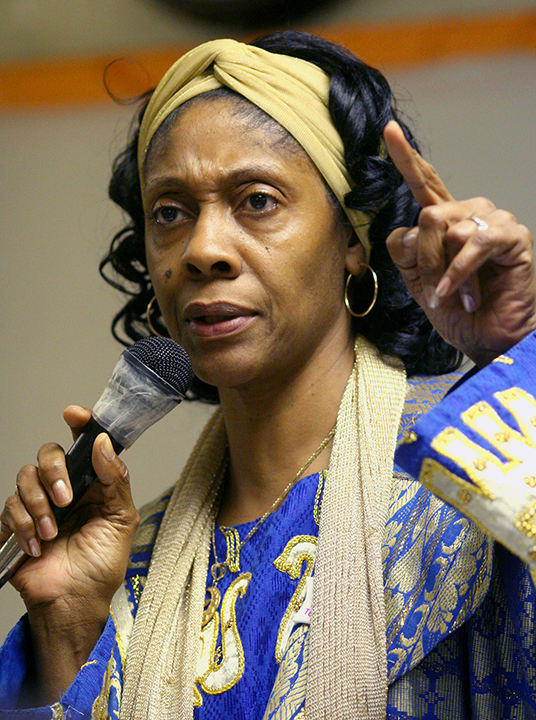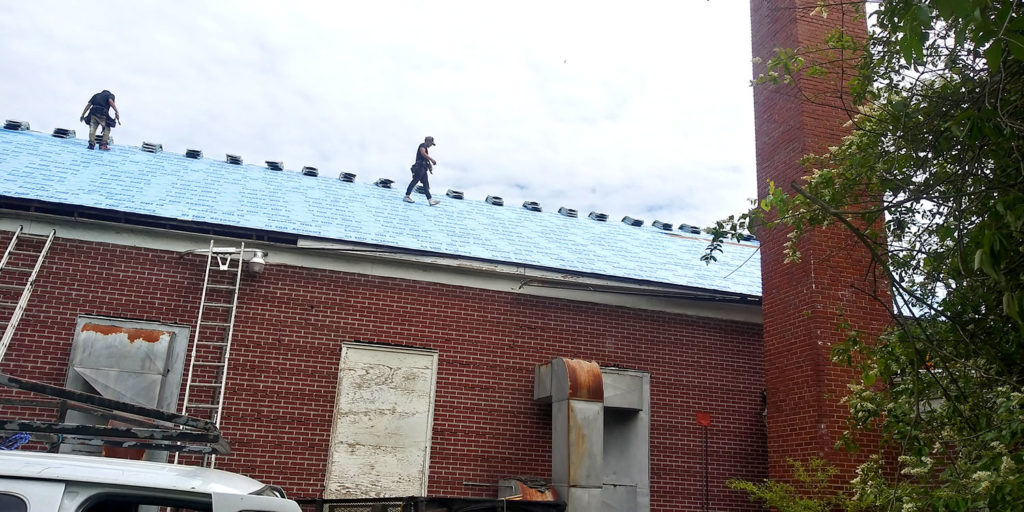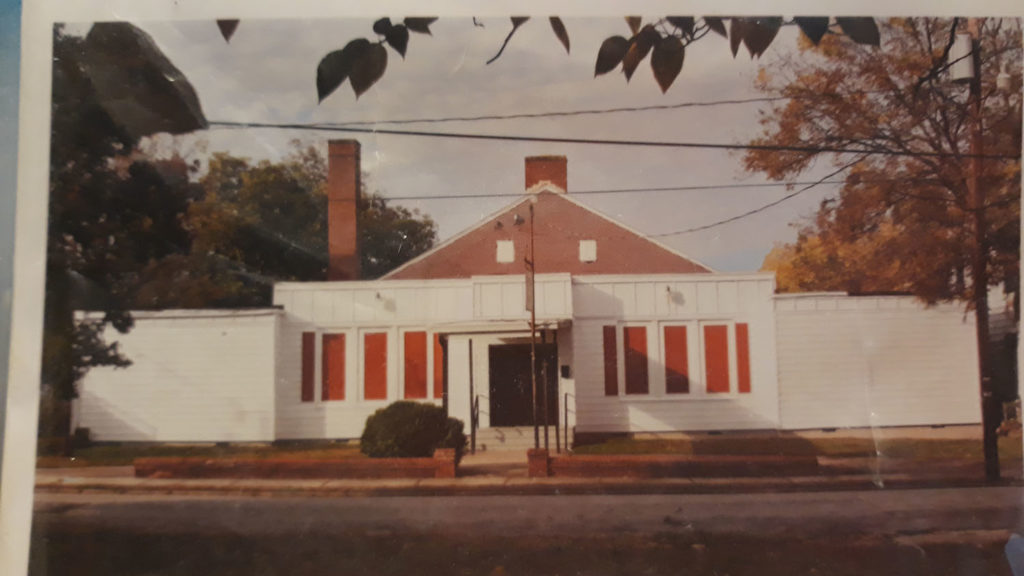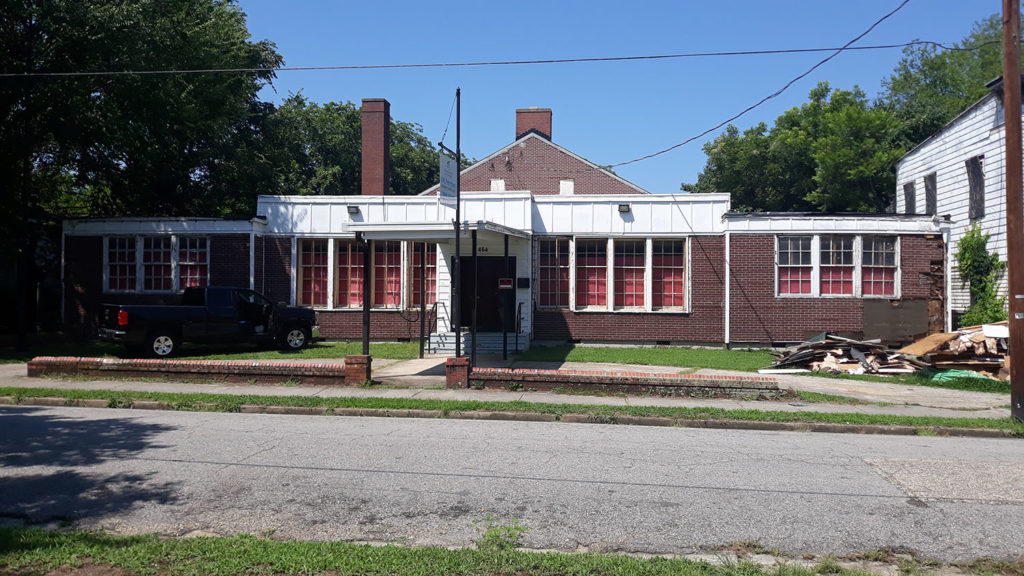USO Beaux-Twenty Club Poised for Designation on National Register of Historic Places
The Heights Community in Petersburg, Virginia is a historically Black district, once known for its affluence. At one time, the Heights was a community of middle-class professionals where homeownership and economic stability was the norm. Over time, however, the Heights experienced the same cycle of disinvestment which often plague neighborhoods of color. Eventually, homeownership declined, and thus began the demolition and erasure of decades of history and culture in a community that was once vibrant.
The Virginia Environmental Justice Collaborative (VEJC) intends to interrupt this cycle of erasure through the historic preservation of the United Service Organization (USO) Beaux-Twenty Club, the site of its resiliency hub located in the Heights community. On December 10, 2020, the site was recommended and officially awarded eligibility designation on Virginia’s statewide register of historic places.
“It was a tedious process, but it’s not over yet,” explained VEJC’s Coordinator Queen Shabazz. “Now we must do an application for recognition on the National Register of Historic Places, but we know we are eligible. The whole community is historic, so we are talking with community members to incorporate their shared, lived experiences to contribute to the application for full designation,” she said.
The location of the Resiliency Hub is considered historic for several reasons. First, it served as a United Service Organization (USO) for colored troops during military segregation in the 1940s – a place where servicemen went to socialize and get services provided to troops and their families. Second, when the facility ceased to exist as a USO, it was founded as the Beaux Twenty Club by Black businessmen in the community, including the first African American Mayor of Petersburg, and in Virginia, Hermanze E. Fauntelroy, Jr. Having an official designation as a historic site opens the space, and eventually the community, up to preservation incentives, benefits, and resources that aid its investment, while protecting it from demolition or reconstruction.
The building was donated in 2019 to United Parents Against Lead (UPAL) which serves as VEJC’s fiscal sponsor and boasts a unique design, which is no longer in use by modern architecture, adding to its historic asset. The accompanying video details some of this architecture and captures VEJC’s work to restore and preserve the building.
VEJC is preserving as many of those historic elements as possible while adding modern touches to ensure the space is up to building code. Windows will be repaired, but not replaced. Wooden ceiling panels will be restored and polished and lockers, used by troops in the 1940s, will be fortified. In addition to serving as a resiliency hub for the community, it will also aim to reallocate resources through legislation that will support community solar and build economic power through entrepreneurship.

“The hub has classrooms where we will hold training for mold remediation, solar installation and DMV driver improvement classes, all geared toward entrepreneurship,” explains Shabazz. Other rooms in the Hub will include office and activity space for community members to gather in the event of a power outage, with access to electricity to charge devices, store food, medication, and other essential items.

“It is a piece of history that is intricate to our culture and speaks to appreciating all the lives that were lost of those who fought for a country that has not fought for them,” said Shabazz reflecting on the importance of this recognition and preserving the area. “This [recognition] sets that stage for the entire community to be recognized, opening it up to receive resources to be protected because they can’t just go in and demolish. It will be a reminder of what [the community] can do, what we represent, and hopefully, put a spark there for people to want to save and preserve the value of their communities.”
Shabazz explained that VEJC has engaged community members for input on additional valuable ways to use the space. Tamika Green, a resident of the Heights is also engaged in the project. “The hub will provide heating and cooling for residents during power outages as well as provide training for residents to enter or reenter the workforce. A food pantry/soup kitchen is also a need in our community and this hub could also serve as a site for our residents.”
The hub will also house a “professional closet” with donated clothing for rising young professionals. “We’ve engaged a “Resiliency Advisory Board” made up of a cross-section of the community; youth, middle-aged, and elders, to have input and basically govern the activities of the hub and hopefully then reach out to and engage the broader community,” Shabazz said.
Lesse Parrish comes from a generation of lifelong residents of the Heights community and engaged through the advisory board with VEJC’s efforts to preserve its historic significance with a special interest in solar power. “As I measure the visual progress of the community of Petersburg, I am delighted to know this area is listed as a historic district. The solar-powered hub will benefit the community by providing knowledge on why solar power is a more progressive energy choice for the future [and offer ]long term financial relief when they see the difference in their electricity bill. It will also support our new President Elect’s measures to end the dependency on power and oil. A small community such as this is a great place to start,” she shared.
VEJC is also deeply engaged in advocacy and has built successful partnerships with the Petersburg City Council, as well as other local community-based organizations that support the necessity of the hub. Shabazz explains that much of the support, through peer learning, capacity building, and technical assistance, provided to VEJC from the Partnership for Resilient Communities (PRC) has aided in these efforts.

For example, VEJC was recently awarded a grant from the Honnold Foundation to cover the costs associated with the hub’s solar photovoltaic installation, an opportunity it learned of through the PRC. Besides, Shabazz states that making connections with other PRC partner organizations, notably the Power52 Foundation, has helped to inspire thinking about the hub. “The overall support [of the PRC] with questions, providing resources, training, connecting us with other funders and potential partners, have been very instrumental to the success of the project,” Shabazz said. “They often anticipated the needs before I knew it was a need, like communications. They are very attentive and aware, and we appreciate being in a position due to our connection with the PRC to make Environmental Justice [issues] more visible.”
With state designation now approved and the quest for national recognition underway, the VEJC team is working diligently, despite COVID delays to complete the Hub and get it open for business. Following additional stabilization to the ballroom, roof, and interior of the building and the solar installation, Shabazz anticipates completion in the middle of the year. “It will be a boost to the community to see what we can do and the community is receptive. We want to elevate [residents’] voices and, working collaboratively with them, make sure their concerns are included in the decision-making process,” Queen Shabazz said.


